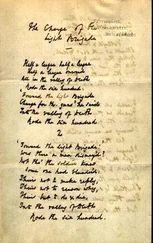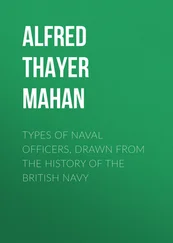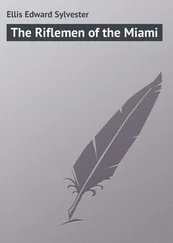Alfred Ellis - The History of the First West India Regiment
Здесь есть возможность читать онлайн «Alfred Ellis - The History of the First West India Regiment» — ознакомительный отрывок электронной книги совершенно бесплатно, а после прочтения отрывка купить полную версию. В некоторых случаях можно слушать аудио, скачать через торрент в формате fb2 и присутствует краткое содержание. Жанр: foreign_antique, foreign_prose, на английском языке. Описание произведения, (предисловие) а так же отзывы посетителей доступны на портале библиотеки ЛибКат.
- Название:The History of the First West India Regiment
- Автор:
- Жанр:
- Год:неизвестен
- ISBN:нет данных
- Рейтинг книги:3 / 5. Голосов: 1
-
Избранное:Добавить в избранное
- Отзывы:
-
Ваша оценка:
- 60
- 1
- 2
- 3
- 4
- 5
The History of the First West India Regiment: краткое содержание, описание и аннотация
Предлагаем к чтению аннотацию, описание, краткое содержание или предисловие (зависит от того, что написал сам автор книги «The History of the First West India Regiment»). Если вы не нашли необходимую информацию о книге — напишите в комментариях, мы постараемся отыскать её.
The History of the First West India Regiment — читать онлайн ознакомительный отрывок
Ниже представлен текст книги, разбитый по страницам. Система сохранения места последней прочитанной страницы, позволяет с удобством читать онлайн бесплатно книгу «The History of the First West India Regiment», без необходимости каждый раз заново искать на чём Вы остановились. Поставьте закладку, и сможете в любой момент перейти на страницу, на которой закончили чтение.
Интервал:
Закладка:
Military crime in West India regiments is of comparatively rare occurrence. Even when the 3rd West India Regiment was in existence, there was less in the three negro regiments than in one of the Line; while drunkenness is confined to the few black sheep who will be found in every body of men. Riots or disturbances between West India soldiers and the inhabitants of the towns in which they are quartered are unheard of, and in every garrison they receive the highest praise for their unvarying good and quiet behaviour. In fact they are merry, good-tempered, and orderly men, who do not wish to interfere with anyone; and, owing to their temperate habits, they are not led into the commission of offences by the influence of drink. Of course, the popular idea in Great Britain of the negro is that he is a person who commonly wears a dilapidated tall hat, cotton garments of brilliant hue, carries a banjo or concertina, and indulges in extraordinary cachinnations at the smallest pretext; but this is as far from the truth as the creature of imagination in the opposite extreme, evoked by the vivid fancy of Mrs. Beecher Stowe.
The bravery of the West India soldier in action has often been tested, and as long as an officer remains alive to lead not a man will flinch. His favourite weapon is the bayonet; and the principal difficulty with him in action is to hold him back, so anxious is he to close with his enemy. It is unnecessary here to refer to individual acts of gallantry performed by soldiers of the 1st West India Regiment, they being fully set forth in the following history; but of such performed by soldiers of other West India regiments the two following now occur to me.
Private Samuel Hodge, a pioneer of the 3rd West India Regiment, was awarded the Victoria Cross for conspicuous bravery at the storming of the Mohammedan stockade at Tubarcolong (the White Man's Well), on the River Gambia, on the 30th of May, 1866. Under a heavy fire from the concealed enemy, by which one officer was killed and an officer and thirteen men severely wounded, Hodge, and another pioneer named Boswell, chopped and tore away with their hands the logs of wood forming the stockade, Boswell falling nobly just as an opening was effected. Again, in 1873, during the Ashanti War – when it was reported, on the 5th of December, by natives at Yancoomassie Assin that the Ashanti army had retired across the Prah – two soldiers of the 2nd West India Regiment volunteered to go on alone to the river and ascertain if the report were true. On their return they reported all clear to the Prah; and said they had written their names on a piece of paper and posted it up. Six days later, when the advanced party of the expeditionary force marched into Prahsu, this paper was found fastened to a tree on the banks of the river. At the time that this voluntary act was performed it must be remembered that, on the 27th of November, the British and their allies had met with a serious repulse at Faisowah, through pressing too closely upon the retiring Ashantis; that this repulse was considered both by the Ashantis and by our native allies as a set-off against the failure of the attack on Abracampa; that the Houssa levy was in a state of panic, and no reliable information as to the position of the enemy was obtainable. It was under such circumstances that these two men advanced nearly sixteen miles into an (to them) unknown tract of solitary forest, to follow up an enemy that never spared life, and whose whereabouts was doubtful.
Other qualifications apart, however, West India troops have proved themselves of the very greatest value on active service in tropical climates from the very fact that, being natives of the tropics, they can undergo fatigue and exposure that would be fatal to European soldiers. In campaigns in which both the West India and the European soldier are employed, all the hard and unpleasant work is thrown upon the former, and the publication in general orders of the thanks of the officer in command of the force is the only acknowledgment he receives; for newspaper correspondents, naturally anxious to swell the circulation of the journals they represent, while giving the most minute details of the doings of the white soldier, leave out in the cold his black comrade, who has few friends among the reading public of Great Britain. Occasionally, facts are even misrepresented. For instance, the defence of Fommanah, on the 2nd of February, 1874, which was really effected by a detachment of the 1st West India Regiment, was, in an account telegraphed to one London daily paper, attributed to the 23rd Regiment, of which corps there were only six or seven men in the place, and those in hospital.
On the last occasion on which West India troops served with Line battalions, namely in the Ashanti War of 1873-74, West India soldiers daily marched twice and even three times the distance traversed by the white troops; and, south of the Prah, searched the country for miles on both sides of the line of advance, in search of carriers. It is not too much to say, that if the two West India regiments had not been on the Gold Coast, no advance on Coomassie would, that year, have been possible. In December, 1873, the transport broke down; there was a deadlock along the road; each half-battalion of the European troops was detained in the camp it occupied, and the 23rd Regiment had to be re-embarked for want of carriers. The fate of the expedition was trembling in the balance, and the control officers were unanimous in declaring that a further advance was impossible, and that the troops in front would have to return by forced marches. Prior to this, the want of transport had been felt to such an extent that the West India soldiers had been placed on half rations; a step, however, which was not followed by any diminution of work, which remained as hard as ever. In this emergency the two West India regiments, with the 42nd – to whom all honour be due – volunteered to carry supplies, in addition to their arms, accoutrements, and ammunition. They acted as carriers for several days, and moved such quantities of provisions to the front that the pressure was removed and a further advance made possible. Even if more carriers had been obtained from the already ransacked native villages, they could not have arrived in time, for the rainy season was fast approaching and the delay of a fortnight would have been fatal.
There was a peculiar irony of fate in the expedition being thus relieved of its most pressing difficulties through the exertions of the West India regiments. It had been Sir Garnet Wolseley's original intention to take into Ashanti territory only the Rifle Brigade, the 23rd, and the 1st and 2nd West India Regiments; and, on the arrival of the hired transport, Sarmatian , he wrote, on the 15th of December, that he did not propose landing the 42nd. In the course of the next three days, however, he changed his views, and, in his letter of the 18th December, gave as his reason: "I find that the one great obstacle to the employment of a third battalion of English troops, viz., the difficulty of transport, is as great in the case of a West India regiment. The West India soldier has the same rations as the European soldier, and a West India regiment requires, man for man, exactly the same amount of transport as a European regiment." The 42nd, therefore, was to be landed and taken to the front, while the 1st West India Regiment was to remain at Cape Coast Castle and Elmina as a reserve. Afterwards, when the transport failed, it was found that the West India soldier could do the work of the European on half rations, and carry his own supplies as well.
West India regiments at the present day labour under many disadvantages. Owing to the two battalions having to furnish garrisons for colonies which really require three, they are alternately for one period of three years divided into three detachments, and for the next period of three years into six. No lieutenant-colonel of a West India regiment can ever see the whole of his regiment together. The largest number that, under present circumstances, he can ever have under him at any one station is four companies; and the most he can have under his actual command at any one time is six companies on board a troopship. Thus in a regiment there are sometimes three, and sometimes six, officers vested with the power of an officer commanding a detachment; and however conscientiously they may endeavour to follow out a regimental system, every individual has naturally a different manner of dealing with men, and a certain amount of homogeneousness is lost to the regiment as a whole.
Читать дальшеИнтервал:
Закладка:
Похожие книги на «The History of the First West India Regiment»
Представляем Вашему вниманию похожие книги на «The History of the First West India Regiment» списком для выбора. Мы отобрали схожую по названию и смыслу литературу в надежде предоставить читателям больше вариантов отыскать новые, интересные, ещё непрочитанные произведения.
Обсуждение, отзывы о книге «The History of the First West India Regiment» и просто собственные мнения читателей. Оставьте ваши комментарии, напишите, что Вы думаете о произведении, его смысле или главных героях. Укажите что конкретно понравилось, а что нет, и почему Вы так считаете.












